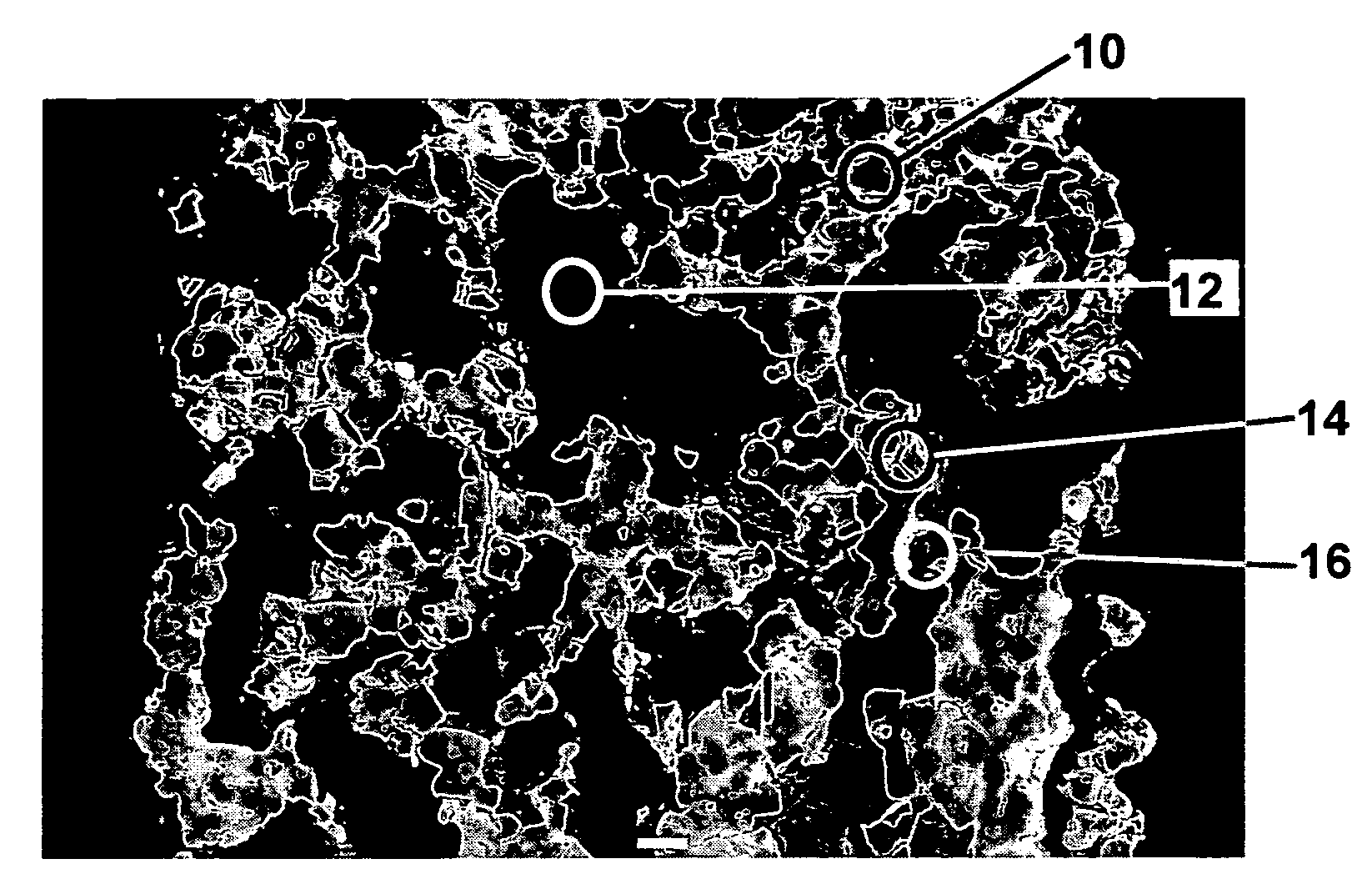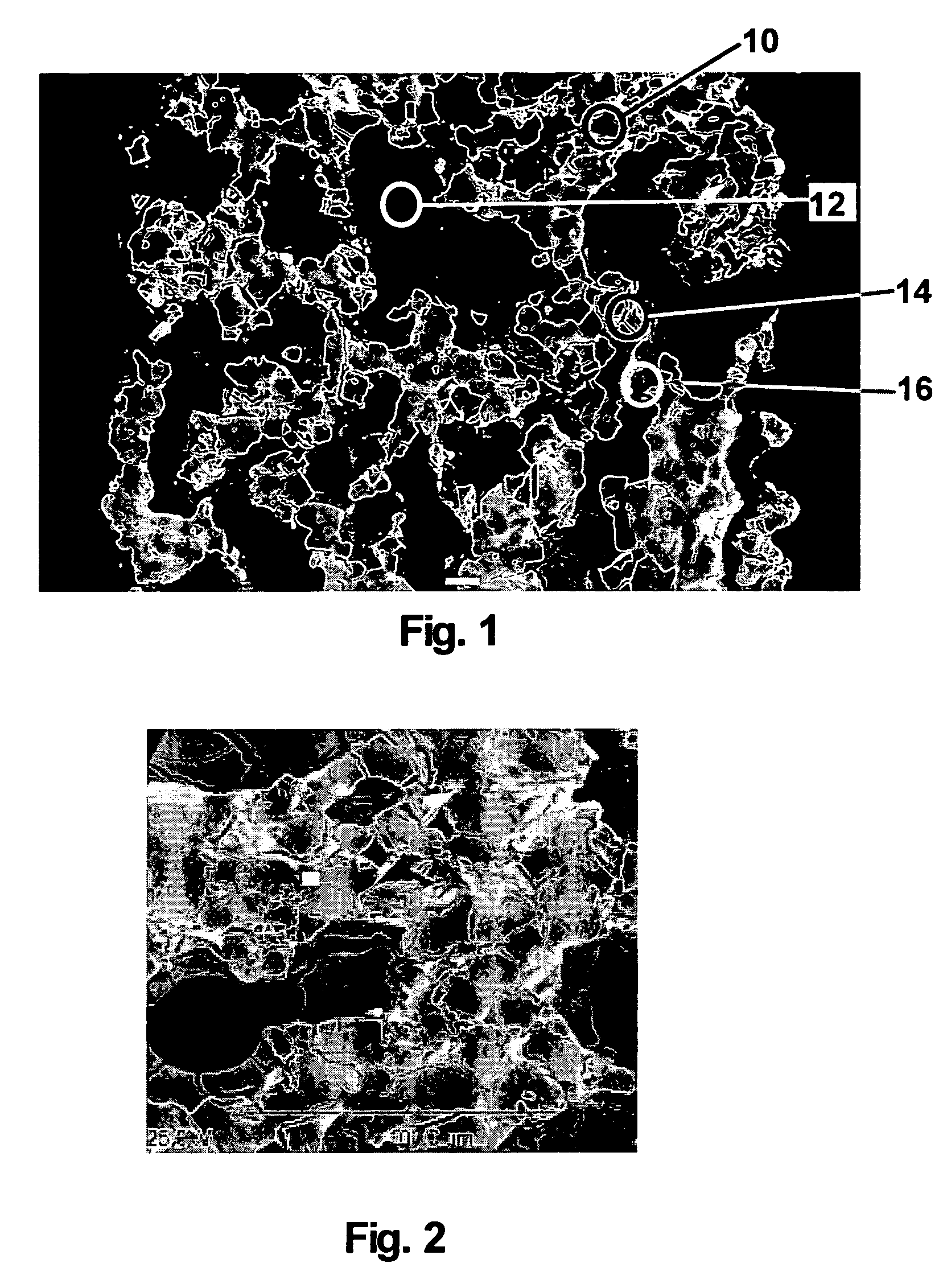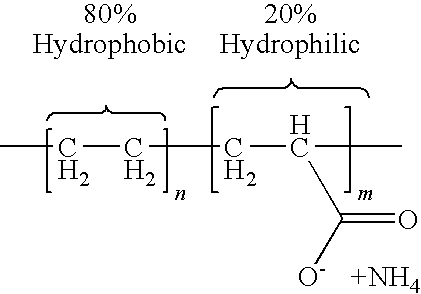Microwave process for porous ceramic filters with passivation and catalyst coatings
a technology of porous ceramic filters and catalyst coatings, applied in catalyst activation/preparation, metal/metal-oxide/metal-hydroxide catalysts, etc., can solve the problem of significant reduction of the overall dry time required, and achieve the effect of improving coating efficiency
- Summary
- Abstract
- Description
- Claims
- Application Information
AI Technical Summary
Benefits of technology
Problems solved by technology
Method used
Image
Examples
example 1
Microwave Drying of Passivation and Catalyst Washcoat Coatings
[0044]For the present experiment, a microwave oven was used for the passivation drying step as well as the catalyst washcoat drying step. CTE samples of a porous aluminum titanate ceramic measuring 1.5″×0.5″ were used for the experiments. The porosity of the aluminum titanate sample material was 47.59%, with the specific sample composition described in U.S. Patent Application Publication No. 2004 / 0092381 A1, filed Jul. 24, 2003, and entitled ALUMINUM TITANATE-BASED CERAMIC ARTICLE. The CTE of the sample at 1000° C. was 8.7×10−7 / ° C. This CTE value is reported as 8.7, as noted in Table 1, and a similar denotation is used hereinafter to report all other CTE values. Without any passivation agent, the resulting CTE was relatively high (44) after the application of the washcoat layer.
[0045]
TABLE 1SAMPLE (1 × 1)% PASSIVATIONAL-20 (G / L)CTE 1000 C.Control008.7Control + AL-20078.8544Ionene (mw)2.471.6811.4Ionene (mw)3.24811.4Ionen...
example 2
Microwave Drying of Passivation and Catalyst Washcoat Coatings
[0057]Microwave drying is further evaluated for the case of a passivation coating formed from a water based solution of a polyvinyl alcohol / polyvinyl amine (PVOH / VAM) copolymer mixed with a polycarbodiimide crosslinker, a solution that is also effective for the treatment of microcracked porous ceramic filters to preserve their low CTE on washcoating / catalyzing. Studies of thermal crosslinking for this passivation coating system typically indicate that completion of the crosslinking reaction takes >31 hours at 100° C., approximately 6½ hours at 125° C., and approximately 1½ hours at 150° C.
[0058]For the purpose of expediting crosslinking and drying to improve process throughput, studies are undertaken employing a microwave oven to affect the drying / crosslinking reaction for this passivation coating system. Three 2″×6″ porous ceramic filters composed of an aluminum titanate ceramic are weighed and then vacuum infiltrated wi...
PUM
| Property | Measurement | Unit |
|---|---|---|
| crack widths | aaaaa | aaaaa |
| diameters | aaaaa | aaaaa |
| particle size | aaaaa | aaaaa |
Abstract
Description
Claims
Application Information
 Login to View More
Login to View More - R&D
- Intellectual Property
- Life Sciences
- Materials
- Tech Scout
- Unparalleled Data Quality
- Higher Quality Content
- 60% Fewer Hallucinations
Browse by: Latest US Patents, China's latest patents, Technical Efficacy Thesaurus, Application Domain, Technology Topic, Popular Technical Reports.
© 2025 PatSnap. All rights reserved.Legal|Privacy policy|Modern Slavery Act Transparency Statement|Sitemap|About US| Contact US: help@patsnap.com



